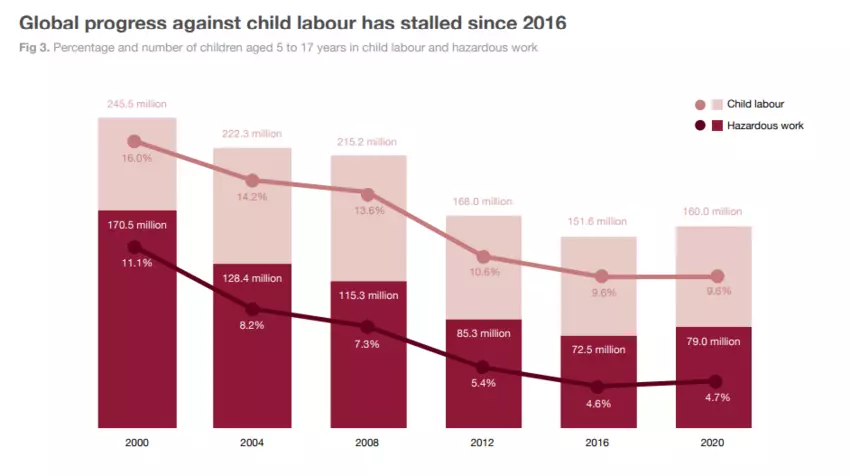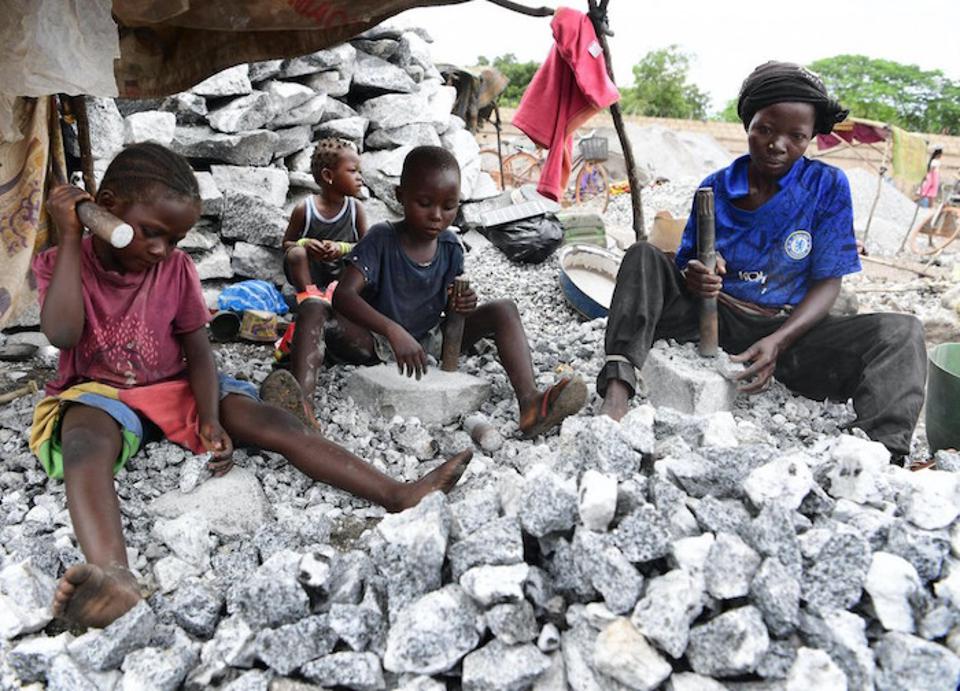The practice that robs children of their innocence and childhood and puts their present and future at risk is often known as child labor. However, as observed by the International Labour Organization (ILO), all work done by children or which involves children should be classified as child labor.
For instance, children who have passed the minimum age of admission to employment and whose working does not hamper their physical and mental wellbeing or interfere with their education should not be classified as child labor.
Rather, it is regarded as something positive as it includes activities like assisting in the family business, earning pocket money after school hours or during the summer break, and it leads to skill enhancement and gaining experience.
What is the definition of child labor?
Furthermore, the term “child labor” is defined by the ILO as “the work that is mentally, physically, socially or morally dangerous and harmful to children; and/or interferes with their schooling—depriving them of the opportunity to attend school; obliging them to leave school prematurely; or requiring them to attempt to combine school attendance with excessively long and heavy work.”
Every child has the right to live a free and safe childhood.
👧🏾👦🏼👧🏽👦🏽👧🏻👦🏾
We’re doubling down on efforts to end #childlabour. Explore ways to get involved: https://t.co/MnEMCpufWH #EndChildLabour2021 pic.twitter.com/uIxV8YL95V— ILO East Africa (@ILO_EastAfrica) June 9, 2021
However, not all work done by children is considered child labor. This varies from country to country. It includes the laws against child labor, the hours of work performed, the minimum age of admission to employment, the condition of working, and so on.
What are the worst forms of child labor?
Article 3 of the International Labor Organization (ILO) Convention No. 182 defines the worst forms of child labor as—“all forms of slavery or practices similar to slavery, debt bondage; compulsory or forced labor, including forced or compulsory recruitment of children in armed conflict; prostitution or pornography; and the use, procuring, or offering of a child for illicit activities like drug trafficking.”
What are the causes of Child Labor?
Poverty is the major driving force behind child labor; the practice has a long history of taking advantage of one’s financial vulnerability. Children prove to be an asset to families as they support the family and their survival is dependent on them working.
In addition to financial hardship, child labor can be caused by inaccessibility to quality education, the belief that children must follow in their parents’ footsteps; where education is not seen as a viable alternative to work, and gender discrimination, where girls are forced to work whereas the male child of the family gets to study.
Is it prevalent in a particular sector?
Child labor is not prevalent in any one particular industry. Instead, it can be traced to a number of sectors, such as agriculture, that is, farming, fishing, forestry, and livestock; the use of children in armed conflicts by armed forces and groups; commercial sexual exploitation; domestic work; mining, and quarrying, etc.
Region-specific data
Asia: Child labor and exploitation are a consequence of multiple factors, such as poverty, social norms, migrations, and the absence/ lack of decent jobs for adults.
A UNICEF study shows that inequalities, such as those based on gender, socioeconomic status, caste, race and ethnicity, are enough to create vulnerabilities and expose children to practices such as child labor.
Africa: as per the estimates of the International Labour Organization (ILO), more than 72 million children in the sub- African region, which accounts for approximately one in every five children, are affected by child labor.
The rising population, extreme poverty, recurring political and social crisis, and inadequate social protection measures resulted in an additional 17 million children engaging in child labor in the sub-African region over the last four years, according to UNICEF.
Middle East: “Child Labor in the Arab Region: A Quantitative and Qualitative Analysis”—a report commissioned by the League of Arab States (LAS) and the Arab Council for Childhood Development (ACCD) gives a detailed analysis of the trend of child labor in the Arab region.
The study observed that child labor has become the predominant mechanism for families to cope with conflicts, mass displacement, and extreme poverty.
COVID-19’s Influence
According to the United Nations Children’s Fund (UNICEF) and the International Labour Organization (ILO), globally, the number of children in child labor has risen to 160 million, with a significant increase of 8.4 million children in the last four years.

Thousands of children missed out on their schooling due to pandemic COVID-19 pandemic restrictions, along with growing food insecurity, loss of their primary caregivers, and an unprecedented economic crisis that forced them to work for their survival or support their families.
Furthermore, UNICEF promotes a “multisectoral approach” to eliminate child labor globally. This involves programming across education, social protection, and child rights protection. Focusing on promoting responsible business practices for children and calls for prioritizing action against the worst forms of child labor and monitoring the situation.

